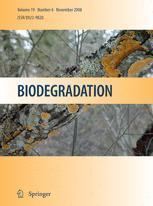Order Actinomycetales Family Mycobacteriaceae | Phylum Actinobacteria Suborder Corynebacterineae Genus Mycobacterium Rank Species | |
 | ||
People also search for Mycobacterium gilvum | ||
Mycobacterium vanbaalenii is a rapidly growing mycobacterium that can use polycyclic aromatic hydrocarbons. It was first isolated from petroleum-contaminated estuarine sediments and has been shown by 16S rRNA gene sequencing to be closely related to Mycobacterium aurum and Mycobacterium vaccae. M. vanbaalenii has potential use in the bioremediation of polycyclic aromatic hydrocarbon contaminated environmental sites. Etymology: vanbaalenii of Van Baalen, in memory of Dr Chase Van Baalen, late Professor at The University of Texas Marine Science Institute, Port Aransas Marine Laboratory, Port Aransas, TX, USA.
Contents
Description
Microscopy
Colony characteristics
Physiology
Pathogenesis
Type strain
References
Mycobacterium vanbaalenii Wikipedia(Text) CC BY-SA
